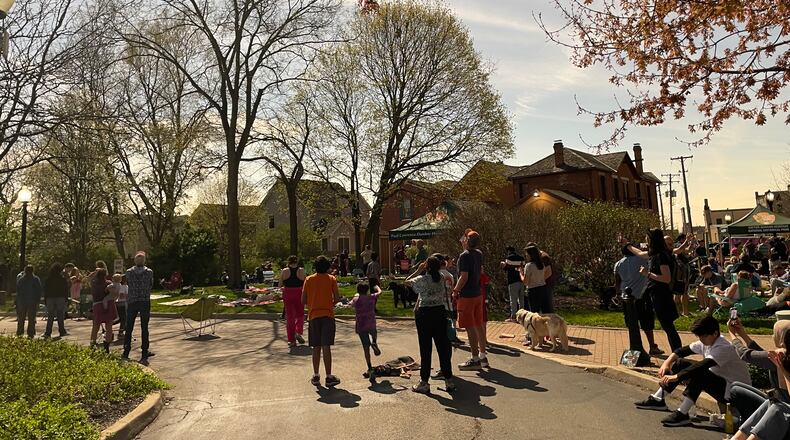Right at 9 a.m. when the visitor center and museum opened, people began pouring in to collect their free eclipse glasses and check out exhibits displaying snapshots of the early days of the Wright brothers.
“It’s been so great to see people this excited,” she said.
The park ranger met people traveling from as far as Washington state and Nebraska to see the eclipse in totality.
For eclipse viewer Helen Dunn, of Virginia, her trip to 100% totality was full of memories of years she spent living in her old home of Zanesville and of her first total solar eclipse in Idaho.
She and her husband traveled to the Dayton area because of its proximity to her home outside of Washington D.C. — but it was still an eight- to nine-hour trip, she said.
“We couldn’t have asked for more beautiful weather,” she said two hours before the eclipse’s beginning Monday afternoon. “The sky is clear. The sun is shining — for now.”
Hours leading up to totality were full of anticipation for an event that won’t happen again in the nation until 2044.
Children and their families created eclipse-themed art, and people walked in guided tours of the park throughout Monday morning and early afternoon.
Applause and cheers erupted throughout the Wright-Dunbar neighborhood as the moon blocked out the sun around 3:10 p.m., creating three minutes of near-total darkness.
For many eclipse viewers, like Greg and Julie Lingl, it was their first-ever total solar eclipse.
The two travelers were on their way back from visiting family and wanted to hit up a national park location on their trek back home to Minnesota.
“This really is historic,” Julie Lingl said. “We’ve never seen anything like this.”
About the Author

